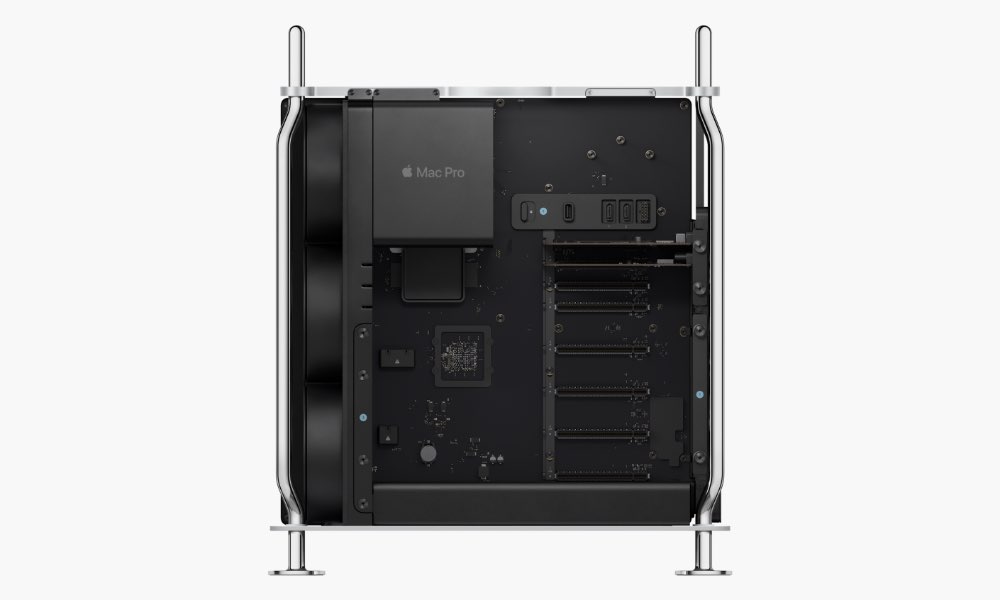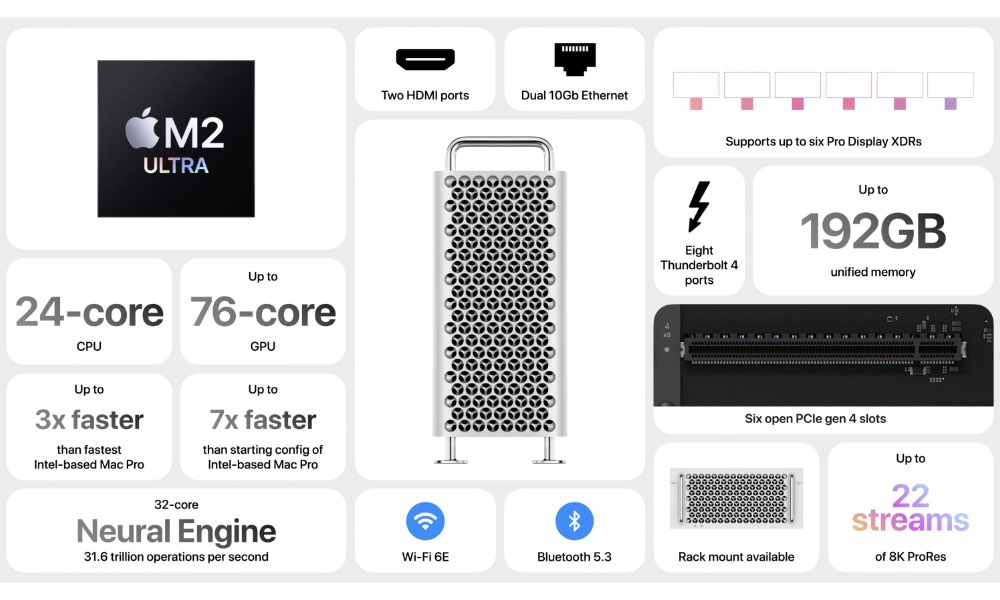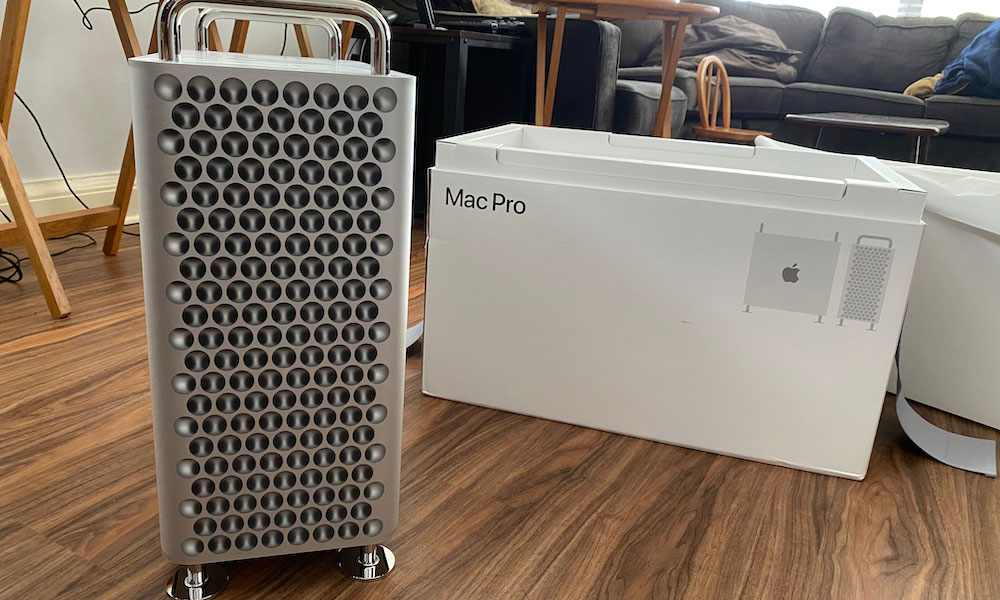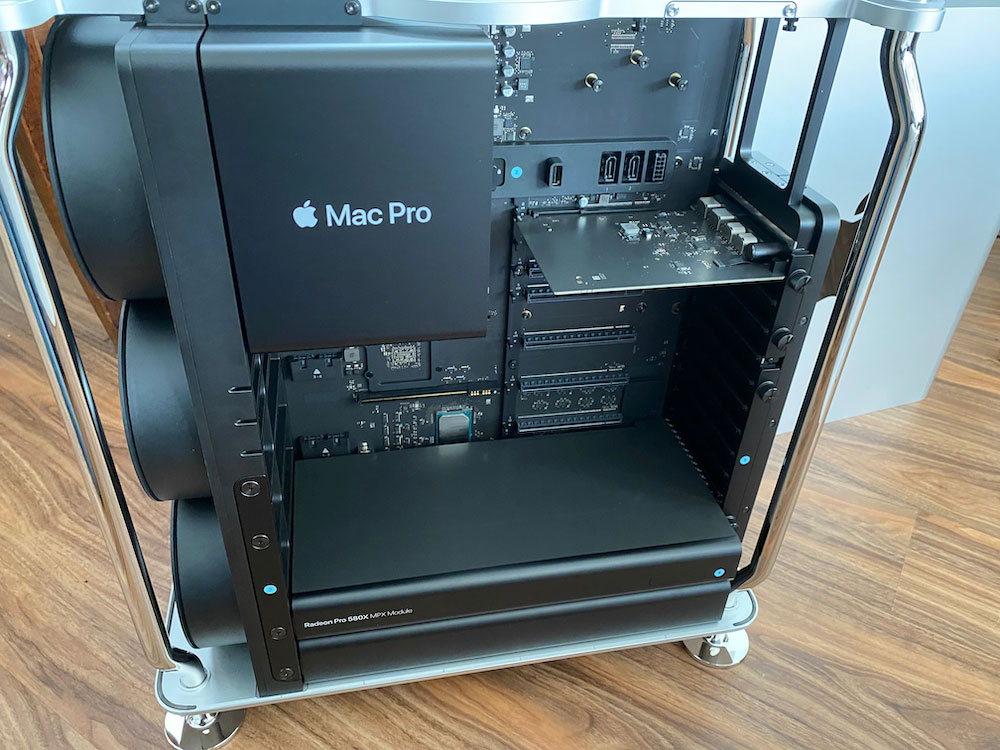Apple May Still Have an M4 Ultra Mac Pro in the Works

Toggle Dark Mode
New code accidentally leaked by Apple reveals that it may still be working on a new Mac Pro that would be powered by an as-yet unseen M4 Ultra chip.
Currently, Apple’s top-end desktop Mac is powered by the somewhat aging, yet still powerful, M2 Ultra, which boasts a 24-core CPU and a 60-core GPU. The chip is also equipped with a 32-core Neural Engine.
Now, code discovered by Macworld indicates Apple is preparing a new M4 Ultra version of the machine. The new Mac Pro has an internal identifier of t8152 that matches the “Hidra” codename that Bloomberg’s Mark Gurman spoke of in early 2024. At the time, Gurman said the new chip would potentially support up to half a terabyte of Unified Memory. That would be a healthy boost over the 192 GB limit of the current M2 Ultra Mac Pro.
Apple’s Mac Pro is not updated nearly as frequently as most of the Mac lineup. The M4 Ultra chip would replace the M2 Ultra chip that has powered the current Mac Pro since it debuted in 2023.
It hasn’t been determined how many cores the M4 Ultra has. However, based on the M4 Max used in the MacBook Pro and Mac Studio, it is likely to boast 32 CPU cores and a GPU with 80 cores, as prior Ultra chips have effectively doubled the cores of their highest-end “Max” counterparts.
The Mac Pro is definitely overdue for an update, given the significant time since its last update, and Apple would be unlikely to skip both the M3 and M4 lineups of chips without restoring its pro desktop Mac.

Last April, Gurman predicted that Apple would move its whole lineup to M4 chips by the end of 2025, in the following order: new iMac and MacBook Pro models in late 2024, new 13-inch and 15-inch MacBook Air models in the spring of 2025, a mid-year Mac Studio release with a high-end M4 chip, and a new Mac Pro with an M4 Ultra in the “second half of 2025.”
It’s worth noting that the discovery of code doesn’t necessarily mean Apple is working on an M4 Ultra-powered Mac Pro; there’s no guarantee such a Mac will ever reach store shelves. Like most technology firms, Apple tests multiple types of devices in varying configurations. This can result in snippets of code from previous testing being left behind, which means not all tested devices make it into production.
It should also be considered that Apple is expected to release its M5 family of processors this fall. The next-generation processors are likely not far from release, as M5 chip identifiers have been discovered in iOS 18’s codebase, and rumors point to both an M5 iPad Pro and new M5 MacBook Pro models coming in the next six months. Still, that doesn’t rule out Apple using an M4 Ultra alongside newer M5 chips, as it did with the Mac Studio’s M3 Ultra earlier this year.
The History of the Mac Pro
The first Mac Pro debuted in August 2006 and was powered by an Intel processor. The machine was intended as a replacement for the Power Mac lineup and boasted two dual-core Xeon Woodcrest processors. The Initial Mac Pro sported the same rectangular tower case used by the Power Mac G5.
In an April 2007 update, the Mac Pro became a dual quad-core Xeon Harpertown model, followed by 2010 and 2012 revisions to Nehalem-EP/Westmere-EP architecture Intel Xeon processors. Later, an April 2007 update brought a dual quad-core Xeon Clovertown model. January 2008 saw Apple offer a dual quad-core Xeon Harpertown model. 2010 and 2012 brought revisions with Nehalem-EP/Westmere-EP architecture Intel Xeon processors.
Despite these performance upgrades, the Mac Pro retained the same design until December 2013, when Apple released the much-maligned cylindrical Mac Pro, referred to by many as the “trash can model.” This was powered by a Xeon E5 processor with up to 12 cores, boasted dual AMD FirePro D series GPUs, PCIe-based flash storage, and an HDMI port. However, it lacked any PCIe expansion slots. Unfortunately, the cylindrical design of the machine prevented Apple from upgrading it with more powerful hardware.
In 2019, Apple returned to a tower form factor that was reminiscent of the first-generation Mac Pro. The machine boasted larger air cooling holes and a new opening mechanism. It was powered by an up to 28-core Xeon-W processor with support for up to a staggering 1.5 TB of RAM, sported eight PCIe slots, AMD Radeon Pro Vega GPUs, and most data ports were replaced with USB-C and Thunderbolt 3 ports.
The current 2023 Mac Pro continued the design of the 2019 model and is powered by an Apple M2 Ultra chip. It was the first Mac Pro model to use an Apple silicon chip.
[The information provided in this article has NOT been confirmed by Apple and may be speculation. Provided details may not be factual. Take all rumors, tech or otherwise, with a grain of salt.]









